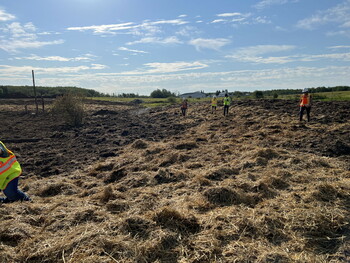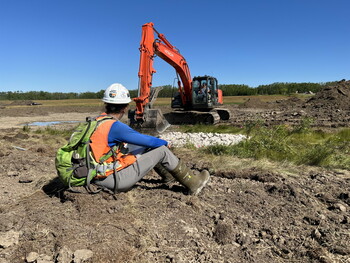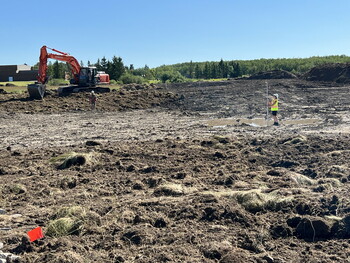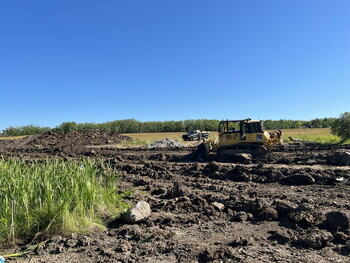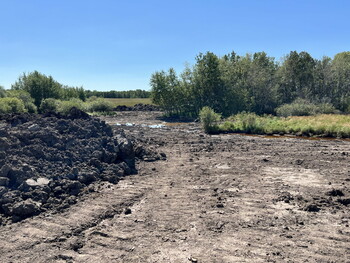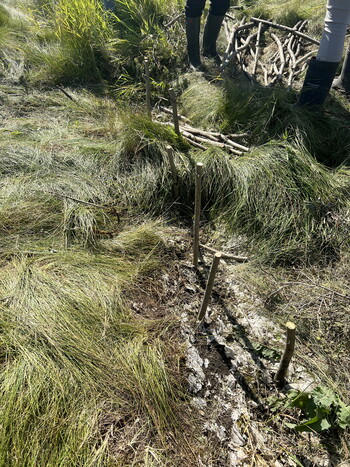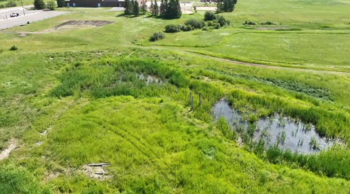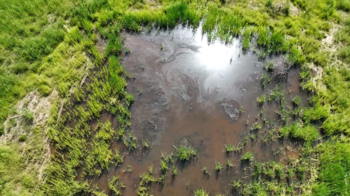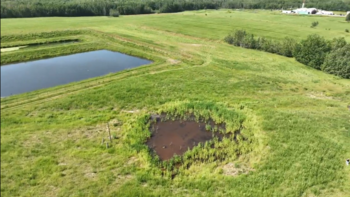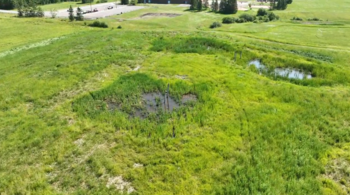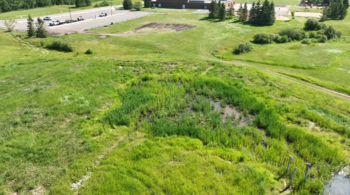Constructed Wetlands and Wetland Reestablishment: Uncas, Strathcona County
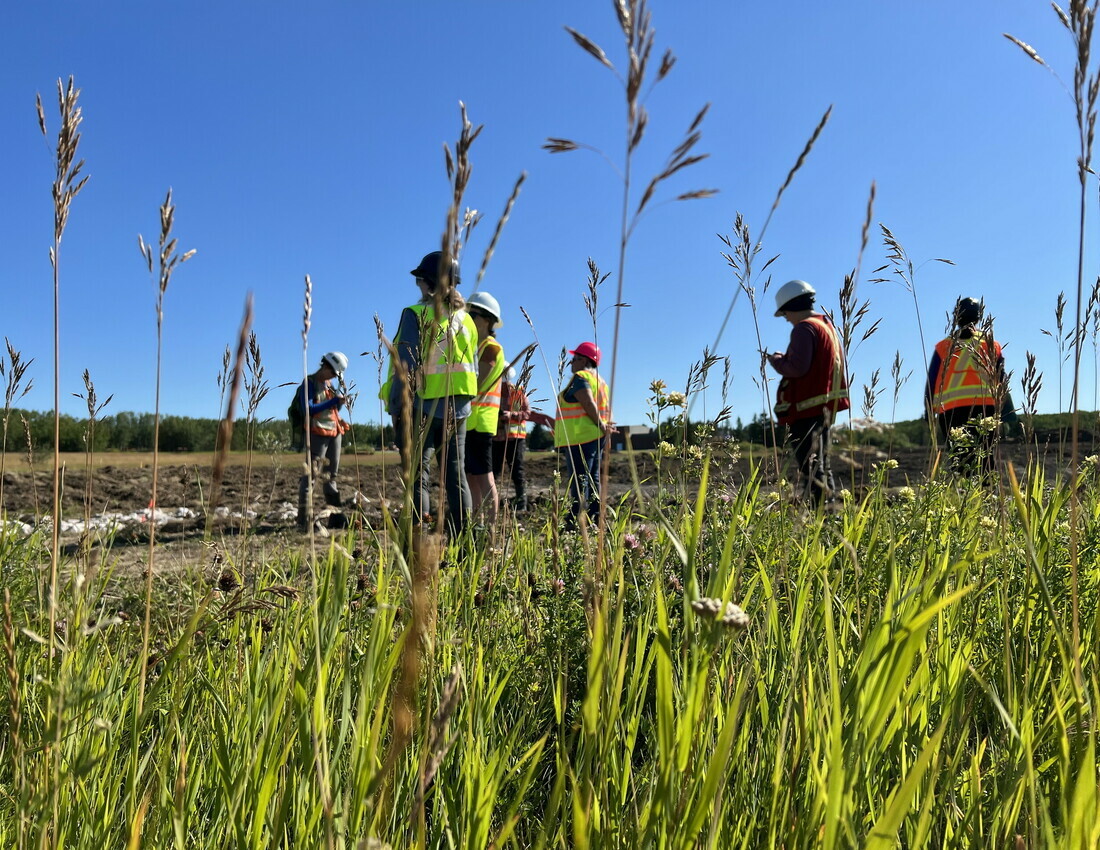
Overview
The Uncas site was identified for wetland re-establishment in a historically drained area in Strathcona County. According to Strathcona County, this area had what is called historical loss and drainage, most commonly due to agricultural development of the land. Through collaboration with consultants and contractors, and with financial support from the Government of Alberta, the rural municipality of Strathcona County transformed the Uncas site into a space for learning and conservation with a complex of six constructed marshes.
Objectives
Strathcona County is committed to protecting its valuable wetlands through the Wetland Conservation Policy and its foundational goal of No Net Loss of wetlands across both urban and rural areas. The policy aims to maintain overall wetland function by offsetting any losses through the restoration of degraded wetlands or the improvement of existing, healthy ones.
As such, the committee of Strathcona County and Government of Alberta representatives identified the Uncas site as a potential project location. The area had experienced a high amount of wetland loss, with agricultural development of the land causing wetland drainage, ditching, and overall wetland loss. This project’s goal was to construct wetlands as close as possible to their historic locations, helping to restore the natural ecosystem that had been altered by past land use.
The constructed wetlands helped to address drainage issues in the area. With its proximity to the Uncas Elementary School, the site also offers educational and engagement opportunities.
Project Planning
The Uncas site was selected for wetland restoration as part of Alberta’s Wetland Replacement Program where the province identified areas of historic wetland loss which are high priority locations for future wetland construction. The Uncas location was selected for wetland replacement for several reasons. Drainage issues in the area made a wetland a logical addition to the landscape, while proximity to the adjacent Uncas Elementary School made for exciting educational opportunities for students, and a chance to engage the broader community in the value of reestablishing natural watershed function and wetlands on the landscape.
The project began with site surveys for elevation, slope, soil texture profiles, historic drainage infrastructure, existing native and invasive plant species, and project design (including basin depth and variation, flow and connectivity through groundwater dam and spillway systems). Because of the site's hydrology and soil profiles, it was decided to use a compacted clay liner technique for building the series of marshes. Heavy machinery was used (excavators and dozers) to dig the variable-depth basins and compact available clay to create an impermeable base for each. Basins were designed with shallow maximum depths to prioritize safety for the future use of the site as an outdoor classroom for elementary school students. Groundwater dams, consisting of clay and rock, were installed along with spillways connecting the basins.
Once the groundworks were complete, snags were installed to provide habitat variety, native wetland species were planted, and the banks of each basin were mulched with straw and seeded with native plant species suitable for riparian areas.
The Business Side
Funding for the project came entirely from the Government of Alberta through the Wetland Replacement Program.
The County worked with contractors and consultants to complete the project. Kristen Andersen, who works with Associated Environmental as a wetland ecologist and teaches at the University of Alberta’s Faculty of Extension, was a partner in the project. Associated Environmental put together the proposal for the province and provided construction oversight. Recharged Industries handled the construction and K&S Growers worked on the planting. Students participating in the Restoring and Creating Wetlands course, led by Kristen Andersen for the University of Alberta’s Faculty of Extension, completed field study days at the Uncas site and were involved as volunteers in elevation surveying, naturalizing historic ditches with willow staking, planting native emergent flora, mulching, and seeding the site.
From the municipal perspective, the project aligned with Strathcona County’s Wetland Conservation Directive and their Conservation of Biological Diversity policy.
“Wetlands can help reduce other ongoing costs, like the effects of flooding where you're having to replace roads, etc. Building the capacity to mitigate some of those concerns can be quite beneficial,” explains Emily Kabotoff of Strathcona County.
The Nature Side
Wetlands have enormous benefits for the community, from improving water quality to mitigating flooding. Additionally, putting wetlands back on the landscape is a step towards building climate change resiliency and capacity back into the ecosystem. It is also a great way to increase biodiversity.
The wetland project is beneficial for wildlife in the area. During construction of the wetland, habitat features like logs and vertical snags were included to attract diverse wildlife. Geese and ducks were seen in the reconstructed wetland shortly after the project was completed.
By installing a variety of habitat features, the wetland supports many different species, from muskrats to snakes, fostering biodiversity. The constructed wetlands include variable depth of basins and peninsulas for both aquatic and semi-aquatic organisms to find habitat as habitat loss and fragmentation are two of the largest threats to biodiversity.
As wetland, riparian and upland vegetation grow and naturalize, they will also aid in sequestering carbon.
The Community Side
The constructed wetland project provides nature-based educational opportunities to the students at nearby Uncas Elementary School, as Alberta’s grade five science curriculum includes a topic on wetlands ecology. Additionally, the wetland features provide learning opportunities in other subject areas of elementary curricula at all grade levels, helping to foster an ethic of stewardship and discovery among students. Each class has adopted one of the six wetland basins and students conduct surveys of the basins.
“The proximity to the school means that there's a great education and engagement opportunity,” says Emily.
Adding wetlands also benefits the community at large, increasing opportunities for outdoor activities like birdwatching and enjoying the area’s natural beauty.
Uncas Constructed Wetlands Site - Aerial Video
